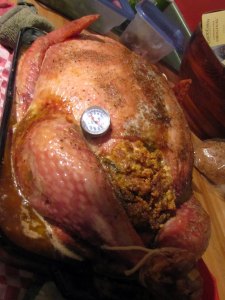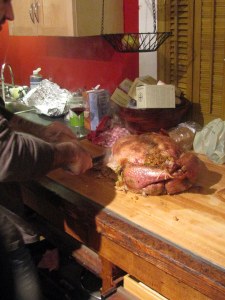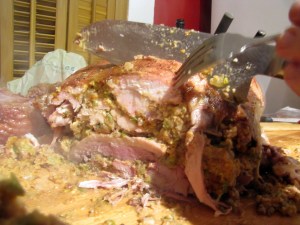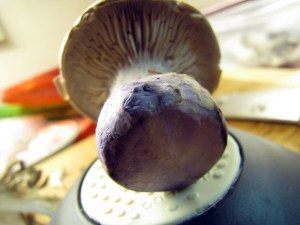I’VE NEVER BEEN MUCH for guidebooks, so when trying to get my bearings in a strange American city, I normally start by asking the cabdriver or hotel clerk some silly question regarding the latest census figures. I say silly because I don’t really care how many people live in Olympia, Washington, or Columbus, Ohio. They’re nice enough places, but the numbers mean nothing to me. My second question might have to do with average annual rainfall, which, again, doesn’t tell me anything about the people who have chosen to call this place home.
What really interests me are the local gun laws. Can I carry a concealed weapon, and if so, under what circumstances? What’s the waiting period for a tommy gun? Could I buy a Glock 17 if I were recently divorced or fired from my job? I’ve learned from experience that it’s best to lead into this subject as delicately as possible, especially if you and the local citizen are alone and enclosed in a relatively small space. Bide your time, though, and you can walk away with some excellent stories. I’ve heard, for example, that the blind can legally hunt in both Texas and Michigan. They must be accompanied by a sighted companion, but still, it seems a bit risky. You wouldn’t want a blind person driving a car or piloting a plane, so why hand him a rifle? What sense does that make? I ask about guns not because I want one of my own but because the answers vary so widely from state to state. In a country that’s become so homogenous, I’m reassured by these last touches of regionalism.
Guns aren’t really an issue in Europe, so when I’m traveling abroad, my first question usually relates to barnyard animals. “What do your roosters say?” is a good icebreaker, as every country has its own unique interpretation. In Germany, where dogs bark “vow vow” and both the frog and the duck say “quack,” the rooster greets the dawn with a hearty “kik-a-ricki.” Greek roosters crow “kiri-a-kee,” and in France they scream “coco-rico,” which sounds like one of those horrible premixed cocktails with a pirate on the label. When told that an American rooster says “cock-a-doodle-doo,” my hosts look at me with disbelief and pity.
“When do you open your Christmas presents?” is another good conversation starter, as it explains a lot about national character. People who traditionally open gifts on Christmas Eve seem a bit more pious and family oriented than those who wait until Christmas morning. They go to mass, open presents, eat a late meal, return to church the following morning, and devote the rest of the day to eating another big meal. Gifts are generally reserved for children, and the parents tend not to go overboard. It’s nothing I’d want for myself, but I suppose it’s fine for those who prefer food and family to things of real value.
In France and Germany, gifts are exchanged on Christmas Eve, while in Holland the children receive presents on December 5, in celebration of Saint Nicholas Day. It sounded sort of quaint until I spoke to a man named Oscar, who filled me in on a few of the details as we walked from my hotel to the Amsterdam train station.
Unlike the jolly, obese American Santa, Saint Nicholas is painfully thin and dresses not unlike the pope, topping his robes with a tall hat resembling an embroidered tea cozy. The outfit, I was told, is a carryover from his former career, when he served as a bishop in Turkey.
One doesn’t want to be too much of a cultural chauvinist, but this seemed completely wrong to me. For starters, Santa didn’t use to do anything. He’s not retired, and, more important, he has nothing to do with Turkey. The climate’s all wrong, and people wouldn’t appreciate him. When asked how he got from Turkey to the North Pole, Oscar told me with complete conviction that Saint Nicholas currently resides in Spain, which again is simply not true. While he could probably live wherever he wanted, Santa chose the North Pole specifically because it is harsh and isolated. No one can spy on him, and he doesn’t have to worry about people coming to the door. Anyone can come to the door in Spain, and in that outfit, he’d most certainly be recognized. On top of that, aside from a few pleasantries, Santa doesn’t speak Spanish. He knows enough to get by, but he’s not fluent, and he certainly doesn’t eat tapas.
While our Santa flies on a sled, Saint Nicholas arrives by boat and then transfers to a white horse. The event is televised, and great crowds gather at the waterfront to greet him. I’m not sure if there’s a set date, but he generally docks in late November and spends a few weeks hanging out and asking people what they want.
“Is it just him alone?” I asked. “Or does he come with some backup?”
Oscar’s English was close to perfect, but he seemed thrown by a term normally reserved for police reinforcement.
“Helpers,” I said. “Does he have any elves?”
Maybe I’m just overly sensitive, but I couldn’t help but feel personally insulted when Oscar denounced the very idea as grotesque and unrealistic. “Elves,” he said. “They’re just so silly.”
The words silly and unrealistic were redefined when I learned that Saint Nicholas travels with what was consistently described as “six to eight black men.” I asked several Dutch people to narrow it down, but none of them could give me an exact number. It was always “six to eight,” which seems strange, seeing as they’ve had hundreds of years to get a decent count.
The six to eight black men were characterized as personal slaves until the mid-fifties, when the political climate changed and it was decided that instead of being slaves they were just good friends. I think history has proven that something usually comes between slavery and friendship, a period of time marked not by cookies and quiet times beside the fire but by bloodshed and mutual hostility. They have such violence in Holland, but rather than duking it out among themselves, Santa and his former slaves decided to take it out on the public. In the early years, if a child was naughty, Saint Nicholas and the six to eight black men would beat him with what Oscar described as “the small branch of a tree.”
“A switch?”
“Yes,” he said. “That’s it. They’d kick him and beat him with a switch. Then, if the youngster was really bad, they’d put him in a sack and take him back to Spain.”
“Saint Nicholas would kick you?”
“Well, not anymore,” Oscar said. “Now he just pretends to kick you.”
“And the six to eight black men?”
“Them, too.”
He considered this to be progressive, but in a way I think it’s almost more perverse than the original punishment. “I’m going to hurt you, but not really.” How many times have we fallen for that line? The fake slap invariably makes contact, adding the elements of shock and betrayal to what had previously been plain, old-fashioned fear. What kind of Santa spends his time pretending to kick people before stuffing them into a canvas sack? Then, of course, you’ve got the six to eight former slaves who could potentially go off at any moment. This, I think, is the greatest difference between us and the Dutch. While a certain segment of our population might be perfectly happy with the arrangement, if you told the average white American that six to eight nameless black men would be sneaking into his house in the middle of the night, he would barricade the doors and arm himself with whatever he could get his hands on.
“Six to eight, did you say?”
In the years before central heating, Dutch children would leave their shoes by the fireplace, the promise being that unless they planned to beat you, kick you, or stuff you into a sack, Saint Nicholas and the six to eight black men would fill your clogs with presents. Aside from the threats of violence and kidnapping, it’s not much different from hanging your stockings from the mantel. Now that so few people have a working fireplace, Dutch children are instructed to leave their shoes beside the radiator, furnace, or space heater. Saint Nicholas and the six to eight black men arrive on horses, which jump from the yard onto the roof. At this point, I guess, they either jump back down and use the door, or they stay put and vaporize through the pipes and electrical wires. Oscar wasn’t too clear about the particulars, but, really, who can blame him? We have the same problem with our Santa. He’s supposed to use the chimney, but if you don’t have one, he still manages to come through. It’s best not to think about it too hard.
While eight flying reindeer are a hard pill to swallow, our Christmas story remains relatively simple. Santa lives with his wife in a remote polar village and spends one night a year traveling around the world. If you’re bad, he leaves you coal. If you’re good and live in America, he’ll give you just about anything you want. We tell our children to be good and send them off to bed, where they lie awake, anticipating their great bounty. A Dutch parent has a decidedly hairier story to relate, telling his children, “Listen, you might want to pack a few of your things together before you go to bed. The former bishop from Turkey will be coming along with six to eight black men. They might put some candy in your shoes, they might stuff you in a sack and take you to Spain, or they might just pretend to kick you. We don’t know for sure, but we want you to be prepared.”
This is the reward for living in Holland. As a child you get to hear this sto-ry, and as an adult you get to turn around and repeat it. As an added bonus, the government has thrown in legalized drugs and prostitution–so what’s not to love about being Dutch?
Oscar finished his story just as we arrived at the station. He was a polite and interesting guy–very good company–but when he offered to wait until my train arrived, I begged off, saying I had some calls to make. Sitting alone in the vast terminal, surrounded by other polite, seemingly interesting Dutch people, I couldn’t help but feel second-rate. Yes, it was a small country, but it had six to eight black men and a really good bedtime story. Being a fairly competitive person, I felt jealous, then bitter, and was edging toward hostile when I remembered the blind hunter tramping off into the Michigan forest. He might bag a deer, or he might happily shoot his sighted companion in the stomach. He may find his way back to the car, or he may wander around for a week or two before stumbling through your front door. We don’t know for sure, but in pinning that license to his chest, he inspires the sort of narrative that ultimately makes me proud to be an American.































